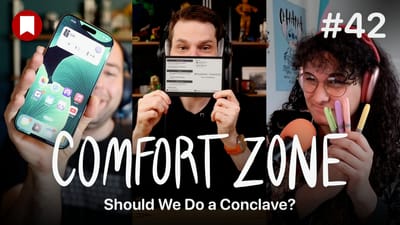What If You Used iOS 9's Low Power Mode all the Time?
One of my favorite new features of Apple’s iOS 9 is Low Power Mode. This feature is designed to kick in when you reach 20% battery remaining, and give you a little more time before you have to race to a charger. And while most iOS 9 reviews covered this mode briefly and determined it worked as advertised, I wondered what would happen if you used Low Power Mode all the time. I was surprised that no reviewer seems to have done this, so I took it upon myself to give it a try. I don’t have any standardized battery tests that I can do, so I simply spent the last 2 weeks alternating between using Low Power Mode all day, and not using it at all and comparing the differences. My findings are rather remarkable.
On to the data!
The above graph shows my iPhone’s battery life over the past 2 weeks. I only tracked weekdays, as I have a pretty solid routine those days. I wake up at the same time and got to sleep around the same time as well. In general, I wake up at 7AM, work for 8 hours, and go to sleep a little after midnight (I know, I should try to get more sleep). Here’s some additional info that will put this data in context:
- I worked 10AM-6PM each day, so usage slows down during that time
- The phone never got plugged in between 7AM and midnight
- About half the days have 30-45 minute workouts in the morning, but they seem to have negligible impact on overall battery life
- Bluetooth, WiFi, Cellular, and GPS were all on for all tests
- The phone was connected to an Apple Watch the entire time each day
- When using the normal power mode, I did not turn on Low Power Mode when prompted at 20% battery life
With that out of the way, I still must remind you that this was not a scientific test. I simply used my phone the same way I normally would day in and day out. And just a reminder, this test is less about how long the iPhone 6 Plus’s battery lasts, and more about what the difference is between having Low Power Mode on at all times and using the phone in its normal battery mode.
With that out of the way, let’s break it down:
There is a definite separation between the days where Low Power Mode is used and the days when it is not. Even the best day in normal mode pales in comparison to the worst day of Low Power Mode. On average, my iPhone chewed through battery 38.7% slower when in Low Power Mode. This is a drastic difference! And while this is not a huge concern for me (my 6 Plus makes it through everyday without needing a charge), this would make all the difference to those with iPhones that are struggling to get the battery life they would like. If you wake up at 7AM and your phone tends to die by 5PM, this difference could get you to almost 9PM! On average, my battery was at 17% at midnight in normal mode, but 49% in Low Power Mode.
Slicing up the data even more, let’s compare the work day to after work. The screen is off more while I’m at work, as most work is being done on my office computer or from my Apple Watch. After work, I have a lot more “screen on time” and the productivity apps clear out as games and social media apps take over. During work hours, with the screen off most of the time, Low Power Mode chewed through battery 44% slower than normal mode. Yes, that’s nearly cutting battery usage in half!
Results for after work, when I’m actively using my phone more vigorously, the results are less astounding but still notable. While using the phone constantly, I saw a 33% decrease in battery usage.
All of these numbers are quite impressive. What’s more interesting than anything else to me is that the graphs for Low Power Mode are very, very similar. They’re so similar I was a little concerned about sharing them. But hand to my heart, these numbers are truly reported. Essentially, every day in Low Power Mode was the same. On the worst low power day, my iPhone had 45% left, and on the best it had 53% (8% swing). Meanwhile, normal mode ranged from 4% on the worst day to 28% on the best (24% swing).
Wrap Up
I am amazed by the impact Low Power Mode has on battery life. It’s not like the extreme low power modes found on Android phones that basically turn everything off and turn your $600+ phone into a dumb phone. It turns some things off, yes, but nothing that really changes how you use your phone. Sure, your screen is a little dimmer, the CPU is cranked down a bit, and your apps don’t update as regularly in the background, but I didn’t mind these things at all. It still felt like an iPhone, and I was just as able to get work done quickly in this mode.
My one frustration is that you can’t have your phone stay in Low Power Mode all the time. It automatically turns itself off when you charge the battery up to 80% or higher, so it is something you have to manually switch on every morning. I made myself a Launch Center Pro action called Go to Low Power Mode that makes it a little easier to do this, but I still wish Apple made this an option you could set up yourself.
EDIT: A big thank you to everyone who mentioned that you can use Siri to go into Low Power Mode. For some reason it never occurred to me that I could do that.
Despite this singular shortcoming, Low Power Mode is an amazing addition to iOS and is the feature that has the potential to have the most impact on people’s iPhone experience in day-to-day use. If you are currently frustrated with your iPhone’s battery life, I highly suggest you give this a try. I think you’ll be very happy you did. And Apple, if you’re reading this, you should at least give people with older iPhones the ability to turn this on at all times. The tiny batteries on the iPhone 4S and 5, in particular will thank you.


